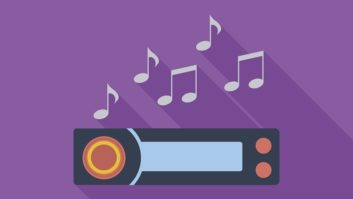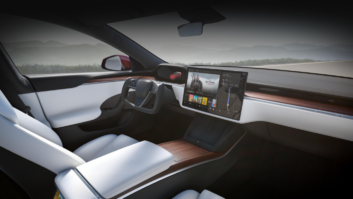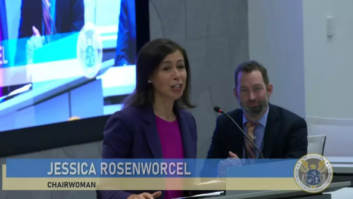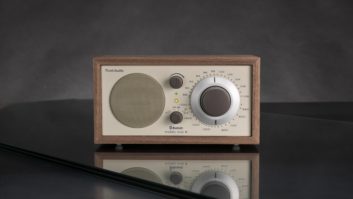The author is senior director of technology and standards for the Consumer Electronics Association and owner/operator of two FM stations in North Carolina.
I recently stirred some feathers when I suggested on the CEA Digital Dialogue blog that radio is committing suicide. Here’s why I said it, and also how I reply to critics.
USA Today recently reported that consumer adoption of HD Radio has been slower than some expected. This article may be slightly misleading, for CEA’s own research suggests that consumers are not passionate about AM/FM receivers in general. That is, perhaps the “HD” has nothing to do with it.
As I noted here earlier, in late 2007 CEA conducted a study to help it predict what products would be most in demand during the important holiday shopping season. People were asked what consumer electronics product they would most like to receive as a gift. They were not prompted with a list of pre-selected choices.
(click thumbnail)iStockphoto/Phil DateThe number one response? Portable MP3/digital audio player. Among the other audio-related responses were in-dash satellite radio and satellite radio generally in no specific form. Smart phone, cell phone and iPhone were also mentioned. What percentage of people said they wanted an AM/FM tuner? Zero. An AM/FM receiver? Zero. An AM/FM radio for their car? Zero. A clock or table radio? Zero. A portable AM/FM radio? Zero.
Perhaps consumers’ interest in free local radio, in general, is waning.
Fear of expansion
And who can blame consumers? Let’s consider the things drawing them away from free local radio.
Satellite radio offers hundreds more channels than free local radio. Internet radio offers thousands more channels than free local radio. GPS devices let consumers get traffic and weather information instantly, without having to wait for the next report on free local radio. And the list goes on.
Competition from new services and radio’s own lack of expansion are the main reasons consumers are looking elsewhere.
As an industry, radio has traditionally been afraid of expansion and terrified of new competitors. Of course fear of new competition is natural, but new competition is a fact of life that everyone must deal with. Unfortunately, it seems to me that radio sometimes deals with it by running to the government and requesting regulatory roadblocks that will keep new competitors at bay.
While that may seem wrong to some, at least we can understand radio’s fear of new competition, and it’s not like it’s the only industry that seeks government interference in the free market for the purpose of blocking competition.
What’s hard to understand is radio’s fear of expansion. Eighteen years ago its trade association hatched a plan to have new spectrum allocated for radio so that radio could expand and grow into the digital age. But the industry revolted, largely because such a plan would have narrowed the difference in signal quality between the highest-powered FM stations and the lowest powered AMs.
That’s right, radio tends to oppose improvements in its own service that would enable stations with poorer coverage to gain too much competitive ground on stations with great coverage, or that would allow new local programming to come on the air. (See Ken C. Pohlmann’s “Principles of Digital Audio,” published by McGraw-Hill Professional, page 647.)
It seems to me that radio’s desire to block new competition at all costs, including lack of expansion of its own service, may have an unfortunate side effect: a loss of focus on radio’s own customers.
Everyone else
My concern is best illustrated in this quote from Bob Botik, a broadcaster, in the early years of digital radio development: “What is under debate here is not what is logical or simple or in the best interest of all, but what is best for America’s current owners and operators, screw the rest of the world.” He was quoted in W.A. Kelly Huff’s 2001 book “Regulating the Future: Broadcasting Technology and Governmental Control,” published by Greenwood Publishing Group.
When you separate people into two groups, America’s current radio station owners and everyone else, I’m afraid that consumers fall into the category of everyone else. Taking care of customers is the key to any business’ success.
What’s amazing to me is that even after all this time, with all of the new competition that radio faces, the industry seems to be taking additional steps to prevent its own service from expanding.
The wireless industry is out there buying up as much spectrum as it can to provide wireless Internet service everywhere, most recently buying up UHF TV spectrum that will be vacated next year when analog television is turned off. Soon wireless spectrum will be used even more effectively as direct competition for radio’s drive-time listeners. There are thousands of Internet radio stations out there, and hundreds of satellite radio stations. Yet radio actively opposes any efforts to obtain new spectrum that would enable it to provide better service to consumers.
Just this summer the NAB Radio Board adopted a resolution opposing the use of television Channels 5 and/or 6 for radio broadcasting after analog TV signals are turned off. Think of the great new services radio could provide if it were to unleash the full potential of HD Radio with 100 percent digital service in Channels 5 and 6, or in some other spectrum.
I’m afraid that radio’s like a ball team whose players are all focused on their individual stats, out there competing with one another. I fear we don’t care enough about the team winning, and I know we should be focusing on the fans because the other teams keep scoring and we have to wonder how much longer the fans will keep showing up.
Commoditization
Some responded to my post by arguing that radio broadcasters don’t need to be concerned about consumers’ lack of interest in AM/FM receivers because radio receivers are a commodity and everybody already has multiple radio receivers.
I agree that AM/FM radios are a commodity, but I don’t see this as a good thing. Just because AM/FM radios are a commodity does not mean they will always be everywhere, like milk and oranges. People have to eat. People don’t have to listen to free local radio.
There are plenty of examples of commodities for which consumer demand dried up. Remember the cassette player? It won’t be long before people are asking, “Remember the CD player?” too. How about dial-up computer modems?
I think I’ve made my point. Declining consumer interest can indicate that a product is heading for extinction, even if that product is a ubiquitous commodity.
Some who commented on my post argued that the Telecommunications Act of 1996 and the changes it brought to radio programming are to blame for declining consumer interest.
I agree that radio programming is a very significant part of the puzzle, and that the changes that occurred in this area post-1996 have generally resulted in many listeners having a lower opinion of AM/FM radio.
This is because of a mix of factors. Yes, local content is important to many, but in reality with today’s analog technology it’s very hard for a radio station in a metropolitan area to be local enough to satisfy most people. I only want to hear local content for my specific community, not any of the other communities in the rest of the metropolitan area. If I had a digital delivery system that allowed me to store and filter the content sent to me I could achieve this.
Far more damaging than less local content, in my view, was the increase in the number of spots broadcasters had to run to pay off the loans they took out to buy up other stations.
Radio listeners are sick of commercials because radio broadcasters loaded up their schedules with so many spots over the past decade that listeners began to perceive that the ratio of spots to desired content was out of balance.
Radio’s collective behavior in this regard was typical of a monopoly. While no individual radio company had a monopoly, the AM/FM service as a whole had a monopoly on live audio from the dashboard. And because it had a monopoly, it got away with abusing the consumer in terms of jamming more and more commercials into the mix.
Free local radio’s monopoly on live programming in the car is now being challenged by satellite radio, and will be further challenged when local TV stations become receivable in the car in a few years. For years AM/FM radio stations only had to compete with each other for in-car listeners who wanted live programming. Now we’ve got competitors that are forcing us to raise our level of play.
Radio needs to focus more on serving today’s modern consumers — no one wants to read its obituary any time soon.
Comment on this or any article. Write to [email protected] with “Letter to the Editor” in the subject field.













